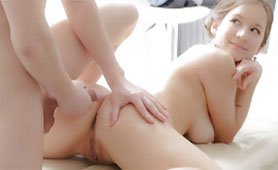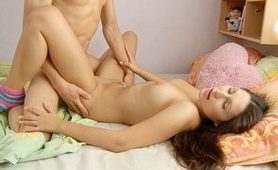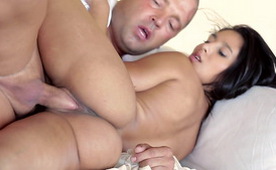Factual Insights into Female Orgasm: Understanding the Female Climax
The female orgasm remains a significant focus of scientific inquiry, with researchers exploring various ways women can achieve climax and the factors that may hinder their orgasmic experiences. In this article, you will gain a deeper understanding of the female orgasm. Several studies have shown that using sex toys to stimulate the clitoris or G-spot can be effective in bringing women to orgasm, so if you love watching a woman toying or using a sex toy, check out the Magical ❤️ Aliyah Hadid website.
Methods of Achieving Orgasm in Women
One approach to understanding female orgasm involves a four-step process outlined by sex researchers in the past.
Arousal: During this phase, a woman experiences desire or arousal, willingly engaging in sexual activity. Sexual stimuli lead to the engorgement of the clitoris, vagina, and nipples, inducing a full-body sexual response. Key factors involved in this stage include increased bl**d flow, heightened neurotransmitters like dopamine and serotonin, and the presence of testosterone.
Plateau: Sexual tension intensifies as a prelude to orgasm. The outer part of the vagina becomes notably engorged, creating what researchers term the "orgasmic platform." Focus on sexual stimuli becomes paramount, overshadowing other sensations. Physiological indicators such as heart rate, bl**d pressure, and respiration continue to escalate.
Climax: This phase involves rhythmic contractions in the uterus, vagina, and pelvic floor muscles. Sexual tension accumulated during lovemaking or self-stimulation reaches its peak, leading to muscle contractions throughout the body. A sensation of warmth typically emanates from the pelvic region, spreading throughout the entire body.
Resolution: As orgasmic release subsides, the body relaxes, and bl**d flow diminishes in the engorged sexual organs. Heart rate, bl**d pressure, and respiration gradually return to baseline levels. These phases describe the physiological progression of female sexual response, from arousal to climax and eventual relaxation.
Closing the Orgasm Gap
Extensive research has uncovered a significant disparity known as the "orgasm gap," indicating that women experience fewer orgasms than men during heterosexual encounters. This divergence becomes a self-perpetuating cycle as women who struggle to climax may begin to believe they won't achieve orgasm, ultimately leading to fewer attempts to prioritize their sexual pleasure.
The fewer orgasms a woman has, the less she expects and desires them in her sexual relationship. Consequently, this pattern leads to a devaluation of orgasms, resulting in decreased sexual pleasure. As orgasms strongly correlate with sexual satisfaction and, by extension, relationship contentment, addressing this gap is pivotal.
To bridge this gap, fostering robust sexual communication between partners is crucial. Prioritizing clitoral stimulation in sexual encounters and dispelling the myth that women are inherently less capable of achieving orgasm due to biological factors are imperative steps. Contrary to popular belief, there's no intrinsic hindrance in a woman's anatomy, genetics, or hormones that prevents orgasms; most women can achieve climax through masturbation. Encouraging women to bring the techniques that work best for them in masturbation to partnered sex is essential.
Diverse Routes to Orgasm
Women possess the remarkable ability to experience orgasms through various methods, with researchers suggesting there may be up to 12 different types of female orgasms. Among these, the "clitoral" orgasm reigns as the most common and reliable route to orgasm. Clitoral stimulation has demonstrated to be a dependable path to orgasm, resembling the physiological response observed in male climax, characterized by engorgement and subsequent release.
Understanding the variety of ways women can achieve orgasm and acknowledging the efficacy of clitoral stimulation can empower women to explore and communicate their desires, ultimately contributing to more satisfying sexual experiences.
Vaginal Stimulation, the G-Spot, and Sexual Satisfaction
Apart from clitoral stimulation, some women can attain orgasm through vaginal stimulation, often attributed to the elusive G-spot, a zone within the vagina described by certain researchers.
The G-spot is an area within the vaginal wall, located approximately an inch or two behind the back of the pubic bone near the junction of the bladder and the urethra. Comprising tissues from the clitoris, urethra, and the female prostate gland, it remains a subject of debate among researchers. While some argue that stimulating the G-spot induces intense sexual pleasure in women, others question the universal ability of women to experience such pleasure solely from this area.
Diverse Sensory Pathways and Orgasm Generation
Interestingly, women can achieve orgasms through various stimuli besides genital touch. Stimulation of breasts or other body parts, coupled with sexual imagery, can trigger orgasms without any physical touch. Researchers have identified nerve pathways beyond the spinal cord, such as the sensory vagus nerve, enabling women to experience orgasms solely through sensations transmitted directly to the brain. These diverse neural pathways contribute to the multifaceted experience of orgasms in women.
Challenges in Achieving Orgasm
Achieving orgasm in women can be hindered by both physical and emotional factors. While physical impediments exist, emotional aspects significantly impact the sexual response cycle. Feelings of anxiety, depression, fear, guilt, distraction, or a sense of loss of control can impede the journey toward orgasm. Emotions play a crucial role, similar to how psychological factors affect men experiencing erectile dysfunction. In some cases, inadequate bl**d flow can also affect a woman's ability to achieve or maintain orgasmic pleasure.
Therapeutic Approaches and Treatments for Enhancing Female Orgasmic Experiences
Approximately a quarter of American women encounter difficulties in achieving orgasm, prompting doctors and sex therapists to employ various therapeutic methods to address these impediments. Directed masturbation, sex education, and behavioral therapy are among the strategies aimed at helping women overcome barriers to climax. Women may consider utilizing vibrators to enhance clitoral stimulation or specialized dildos designed to target the G-spot for increased satisfaction.
Strategies for Addressing Orgasmic Challenges
If behavioral interventions prove ineffective, women seeking alternative measures might explore treatments more extensively researched for male erectile dysfunction.
For women encountering arousal issues akin to men, sildenafil (commonly known as Viagra) can be an option. Additionally, vacuum erection devices, gently applying suction to the clitoris, may aid in enhancing libido and arousal.
Acupuncture is another avenue to consider. Traditional Chinese medicine (TCM) perceives sexuality as a complex interplay of biological, psychological, and spiritual elements. Acupuncture, a common TCM therapy, is believed to restore "qi," the life energy crucial for health and libido enhancement.
Medical Solutions for Low Sexual Desire in Women
Postmenopausal women experiencing diminished sexual desire, with psychosocial and medical causes ruled out, might consider off-label use of topical testosterone. Studies show its potential safety and effectiveness, although its long-term impact on cardiovascular risk and breast cancer incidence remains uncertain.
For premenopausal women with hypoactive sexual desire disorder (HSDD), FDA-approved therapies like flibanserin (Addyi) or bremelanotide (Vyleesi) may offer efficacy. Flibanserin, a daily pill, and bremelanotide, an injectable medication used as needed, are among the available options.
Consultation with a sex therapist is a valuable consideration. These licensed specialists, often psychologists or psychiatrists, are adept in addressing sexual issues. They aim to uncover emotional factors contributing to sexual concerns, helping individuals and couples navigate and resolve issues impacting their sexual experiences and relationships.









































